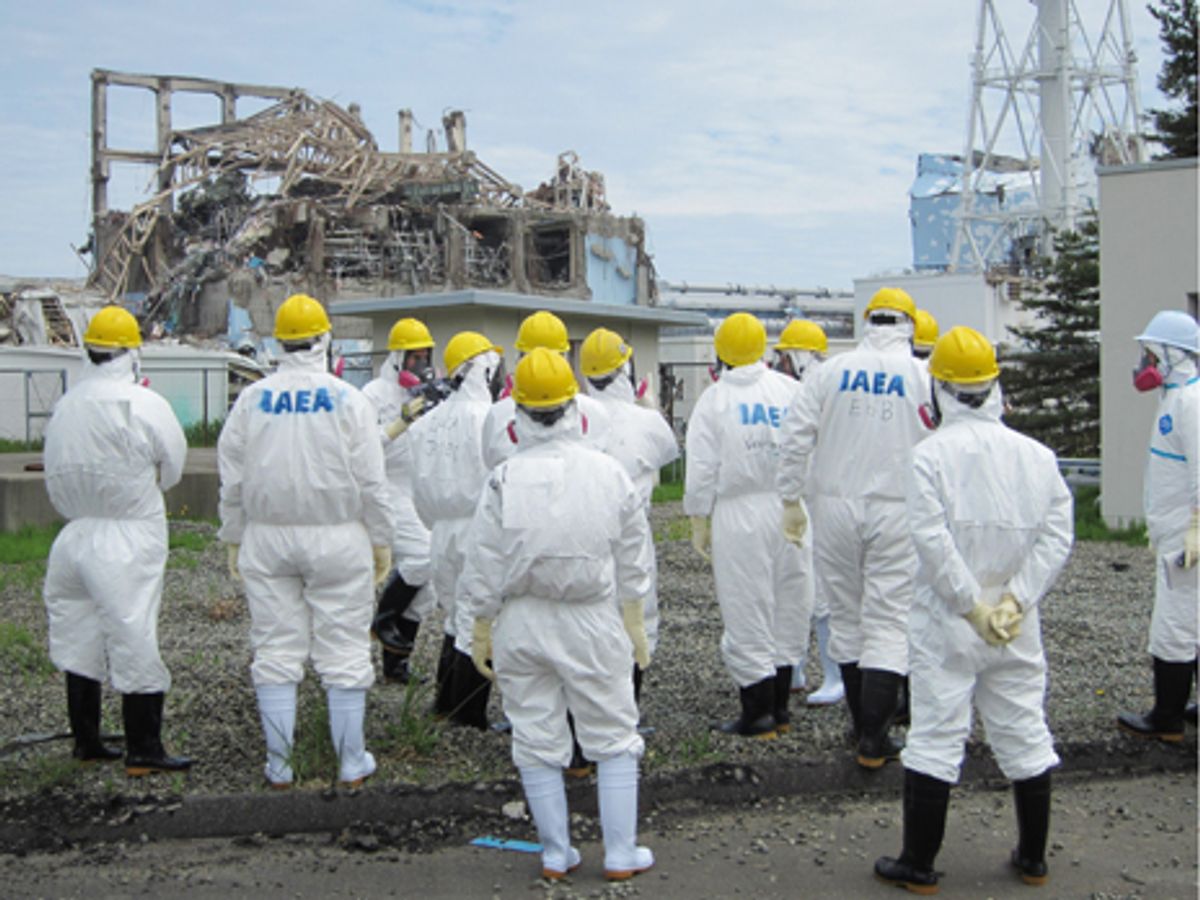Editor's Note: John Boyd is an IEEE Spectrum contributor reporting from Kawasaki, Japan. This is part of IEEE Spectrum's ongoing coverage of Japan's earthquake and nuclear emergency. For more details on how Fukushima Dai-1's nuclear reactors work and what has gone wrong so far, see our explainer.
In a series of stunning flip-flops, officials at Tokyo Electric Power Co. (TEPCO) have reversed themselves on several important statements made recently. On Sunday a senior official voiced doubts that the company would be able to stabilize the damaged reactors in the Fukushima Dai-1 nuclear plant within the nine months it had outlined in its "road map" to restoration, released in April. This reappraisal comes despite the fact that TEPCO updated the road map as recently as 17 May and said, at that time, that it still expected to achieve a cold shutdown as originally scheduled—by the end of 2011.
The reason given for this change of view is a reality check of what TEPCO now faces in reactor units 1, 2, and 3. TEPCO has confirmed that fuel rods melted down in those three reactor units, which damaged at least one of the reactor pressure vessels. Earlier this month, TEPCO officials said they believe the bottom of the pressure vessel in reactor No. 1 was damaged by melted fuel, allowing radioactive water to leak out. TEPCO had planned to fill the containment vessel of the No. 1 reactor with water to cool the fuel inside the inner pressure vessel, and to then establish a water-cooling system using heat exchanges. If successful, the same procedures were to be carried out for Units 2 and 3. But given that contaminated water has been determined to be leaking from the No. 1 reactor into the reactor building's basement, this idea has been scrapped.
A TEPCO official told the press on Sunday that before doing anything else, “We must first find where [the No. 1 reactor is] leaking and seal it.” He added that after the leak is dealt with, it will then take one or two more months to establish a new cooling system. Since TEPCO is likely to face similar conditions or worse inside reactors No. 2 and No. 3, few outside observers voiced surprise at the news that more time will be required to stabilize the power plant.
In another reversal, TEPCO Vice President Sakae Muto said at a press conference on 26 May that contrary to a previous statement, the Fukushima plant director Masao Yoshida did not stop injecting seawater into the No. 1 reactor for 55 minutes on 12 March, the day after the earthquake and tsunami struck. The original report prompted much criticism because it implied that the stoppage was the result of the government’s concern over the possibility of re-criticality—a situation where a nuclear fission reaction restarts after measures have been taken to shut a reactor down. Japanese Prime Minister Naoto Kan had to counter the criticism in the legislature and in public by denying that he gave an order to TEPCO to stop the seawater injection.
In the reversal of 26 May, Muto told the press, “It has become known that the plant director decided that the water injection into the nuclear reactor was most important in preventing the accident from spreading, and in reality, the injection had been continued without a temporary suspension.”
Apparently the original report was based on notes and statements from TEPCO officials not on the site. Chief Cabinet Secretary Yukio Edano, when questioned on the reversal in a subsequent press conference, said, “Our understanding and also our report [on the matter] has turned out to be false. And I find that quite regrettable.”
Following on the heels of this announcement, TEPCO then revealed that it had not disclosed all the radiation data it gathered immediately following the 11 March earthquake and tsunami. In a press conference after this came to light, Edano said, “We have demanded that TEPCO check whether it had any other information that hasn’t been disclosed.” He added that he also demanded to know why that early radiation data hadn’t been disclosed to date, some two-and-a-half months after the nuclear crisis began.
Goshi Hosono, advisor to the government on the nuclear crisis, admitted at a press conference on 27 May that the government has largely relied on TEPCO's initiatives in releasing radiation data. He added that the government had simply based its statements and reports on information supplied by TEPCO.
Some critics suggest that this flurry of revised information from TEPCO was prompted by the arrival of a group of nuclear experts from the International Atomic Energy Agency (IAEA). These experts inspected the damaged plant on 27 May to “identify lessons from the Japanese nuclear accident that could help improve global nuclear safety.” The team of 18 international experts arrived in Tokyo on 23 May and will depart 2 June. They also visited the Fukushima Dai-2 nuclear power plant and the Tokai Dai-2 nuclear power plant, both of which are located in the same northeast area hit by the 11 March earthquake and tsunami.
As well as inspecting the nuclear plants, team members met with Japanese government officials and various nuclear agencies to exchange technical information. The team will submit a report on its findings at the Ministerial Conference on Nuclear Safety to be held at the IAEA's Vienna headquarters in late June.
“We had interesting and very open discussions, and we have had full cooperation while we’ve been here,” said IAEA group leader Mike Weightman, chief inspector of nuclear installations in the United Kingdom. He added, “Visiting Fukushima Dai-1 Nuclear Power Plant was a once-in-a-lifetime experience—once in ten lifetimes, I suspect. Our team left with great admiration for the extraordinary workers who have been undertaking such immensely difficult tasks.”
PHOTO: TEPCO/Reuters





